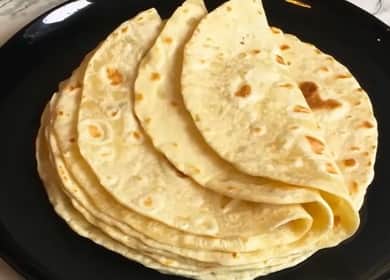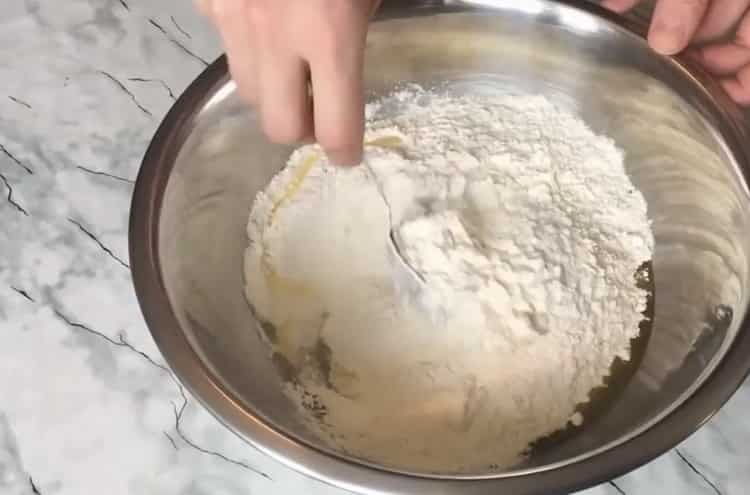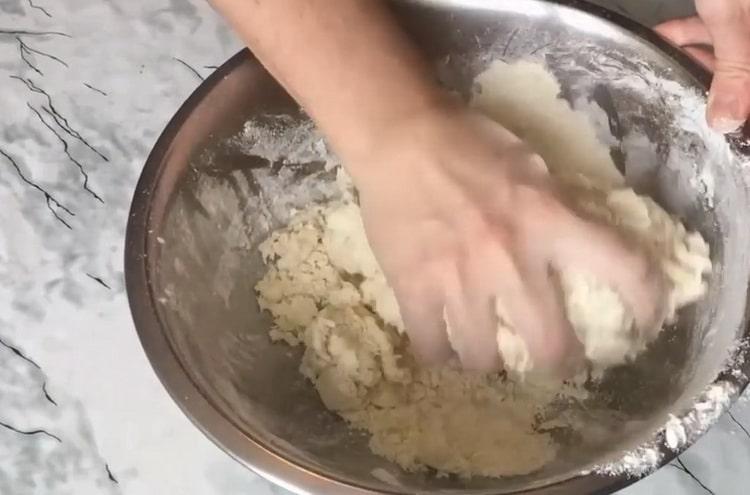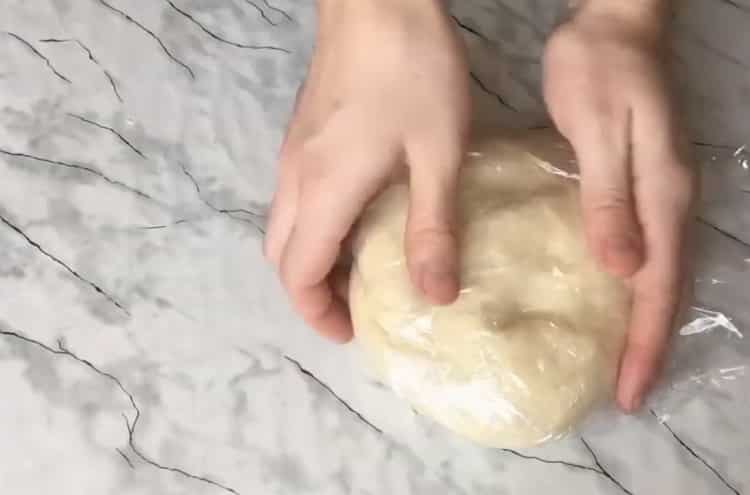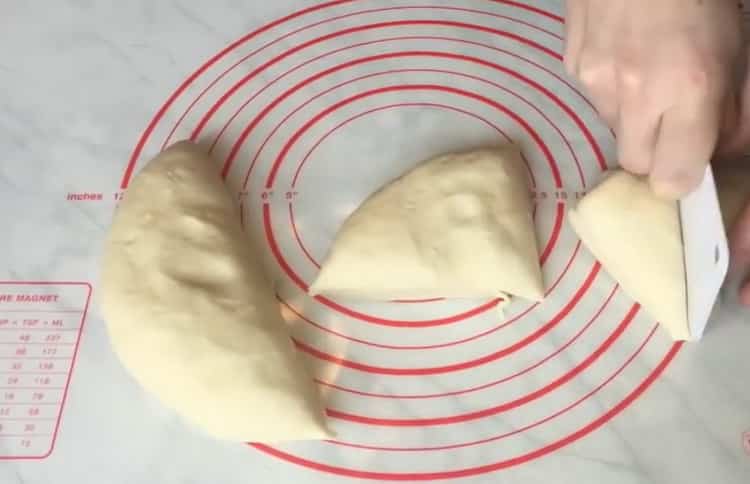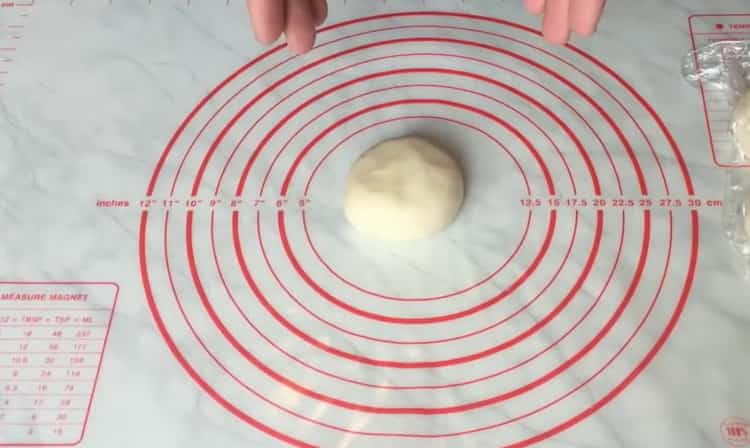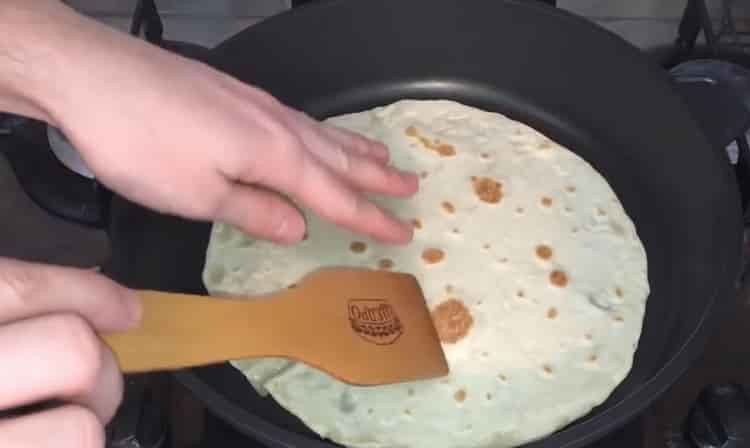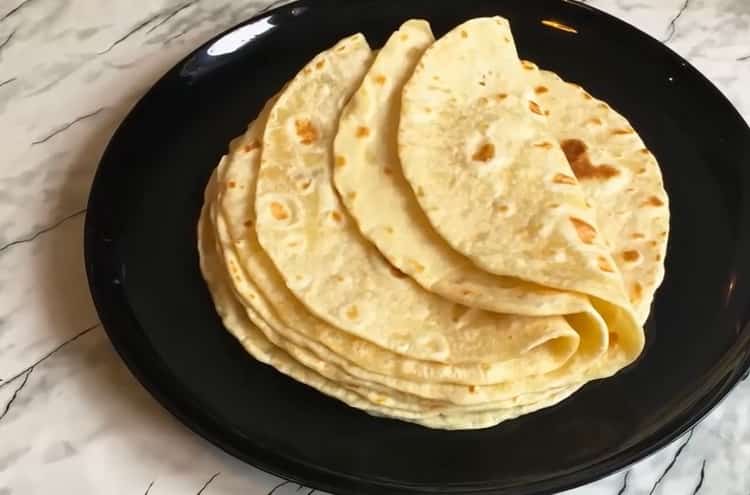Kitchen appliances and utensils:
- kitchen surface for cooking;
- deep bowl;
- sieve;
- tablespoon;
- cling film;
- rolling pin;
- pan;
- scapula;
- flat plate for finished cakes.
Ingredients
| Flour | 450 g |
| Sugar | 7 g |
| Salt | 10 g |
| Hot boiling water | 250 ml |
| Vegetable oil | 20 ml |
Step cooking
- We begin to prepare the dough for fresh cakes. Sift 450 g of flour through a sieve and pour it into a deep bowl. Pour 7 g of sugar, 10 g of salt and 20 ml of vegetable oil into the flour. All the ingredients are thoroughly mixed with a tablespoon.

- We put 250 ml of water to boil and pour hot boiling water into a bowl with flour. It is important that the liquid is exactly hot, because otherwise the dough may not work.

- Since the dough is still hot, mix it with a tablespoon. After cooling, continue to knead with your hands. You can put the dough on a flat surface, lightly sprinkled with flour. So it will be easier to knead. The finished dough should be soft, elastic, and easily behind hands. Wrap the dough in cling film and leave to stand at room temperature for about 30 minutes. A rested dough becomes even more elastic and soft.

- We divide the dough into 8 equal parts, forming a ball from each piece. When rolling small pieces of dough, extra flour is not used.

- Alternately, from each ball of dough we make a cake. While working with one piece, the rest must be covered with cling film so that they do not wind off. We roll each ball of dough with a rolling pin into a thin, round cake. Its thickness is about 1-2 mm, and its diameter is 24-25 cm. Similarly, we roll out all the other balls of dough. It’s better to roll all the cakes right away, because they are very quickly fried. Rolled cakes must be covered with cling film.

- We well heat the pan over a fire and spread the cake, frying on each side until golden brown. The pan does not need to be lubricated and watered, it must be completely dry. In the same way, fry each cake and put it on top of each other.

- After cooling, ready-made cakes should be stored in a sealed package or wrapped with cling film so that they do not dry out. Unleavened cakes are thin, soft and tender. You can serve them with a sweet filling, for example, jam or honey, or with salt.

Video recipe
After watching the video, you can easily prepare unleavened cakes that are suitable for salty and sweet dishes, without spending a lot of time. A step-by-step instruction is given in which the entire cooking process is commented. The list of ingredients that are in almost every kitchen is indicated. Recommendations are given on the method of supplying finished cakes and storage conditions.
\
